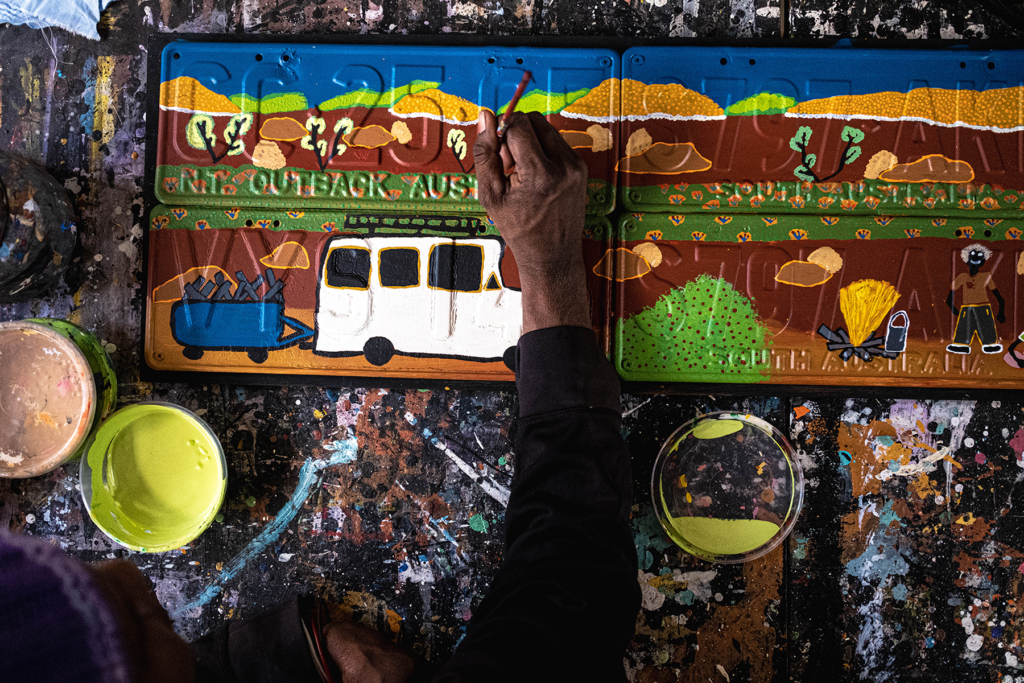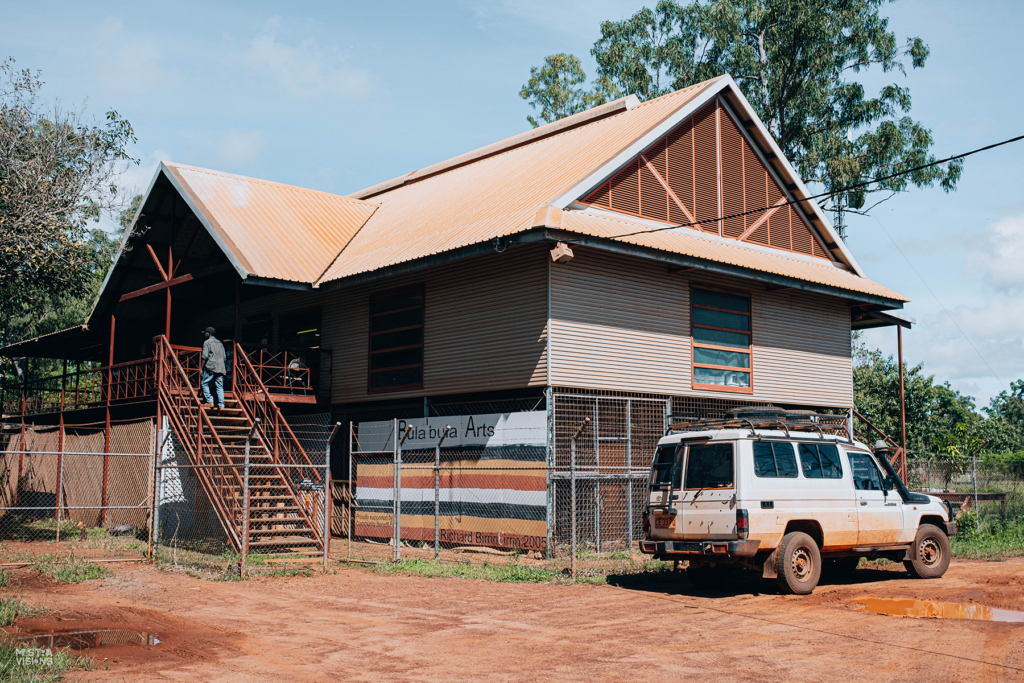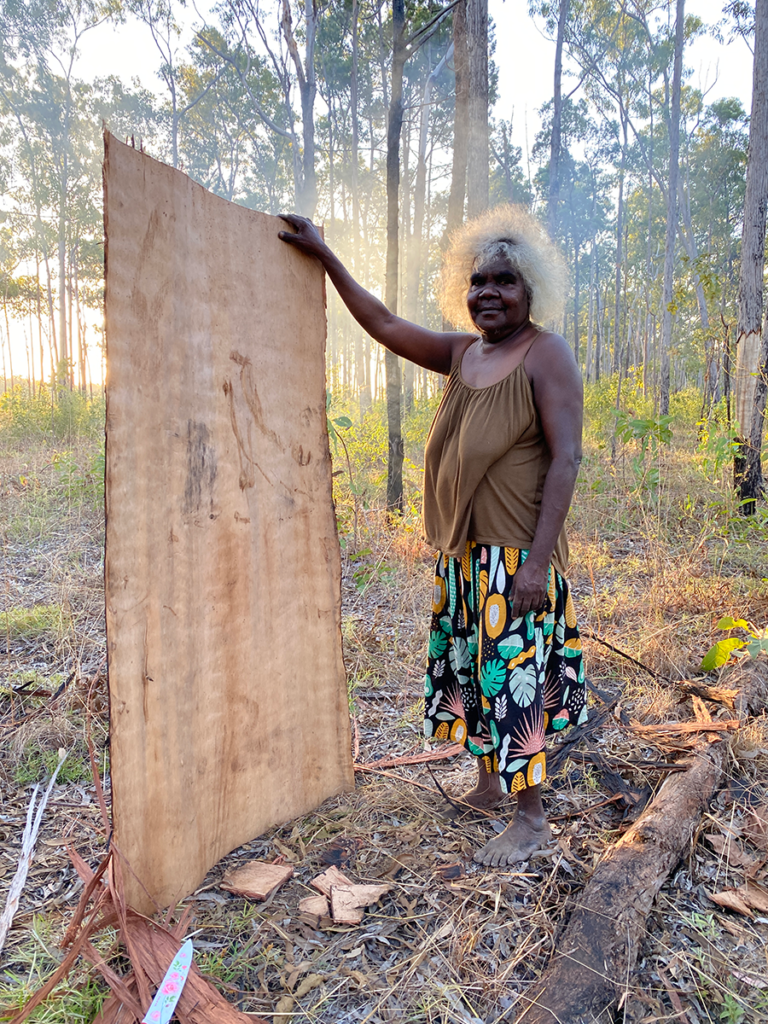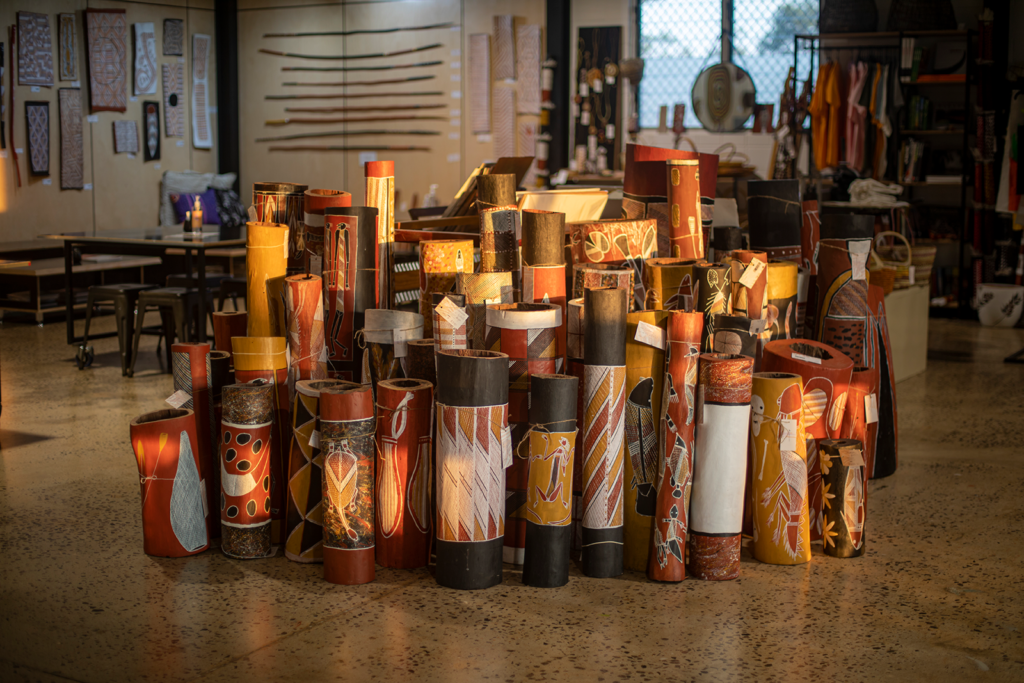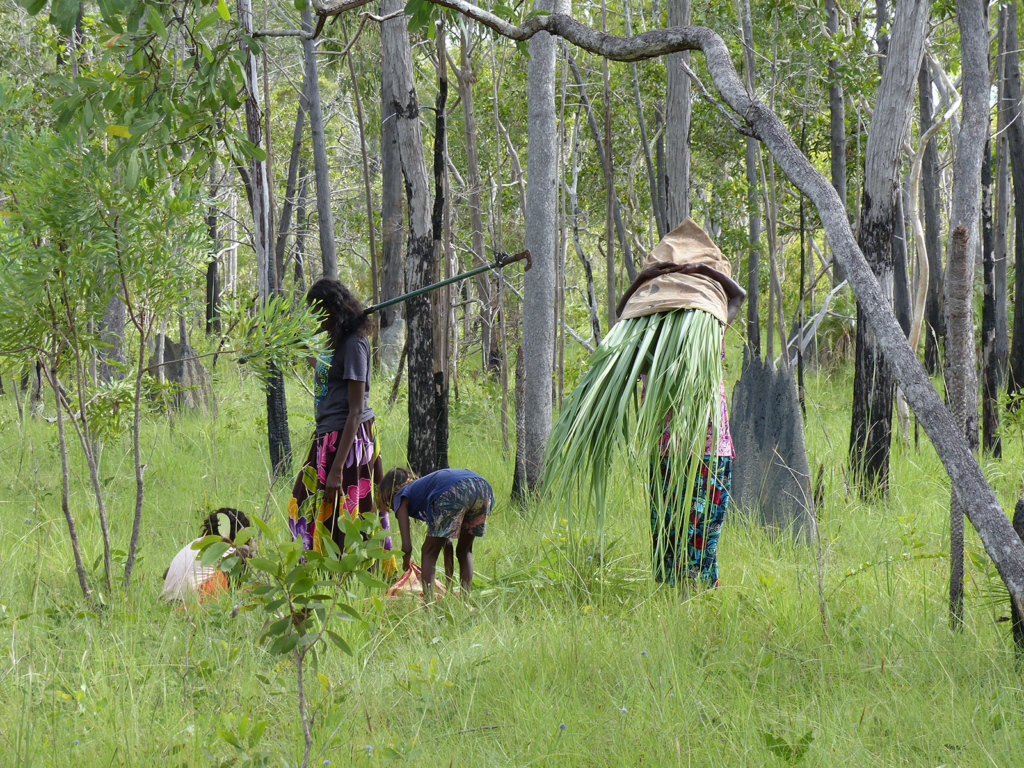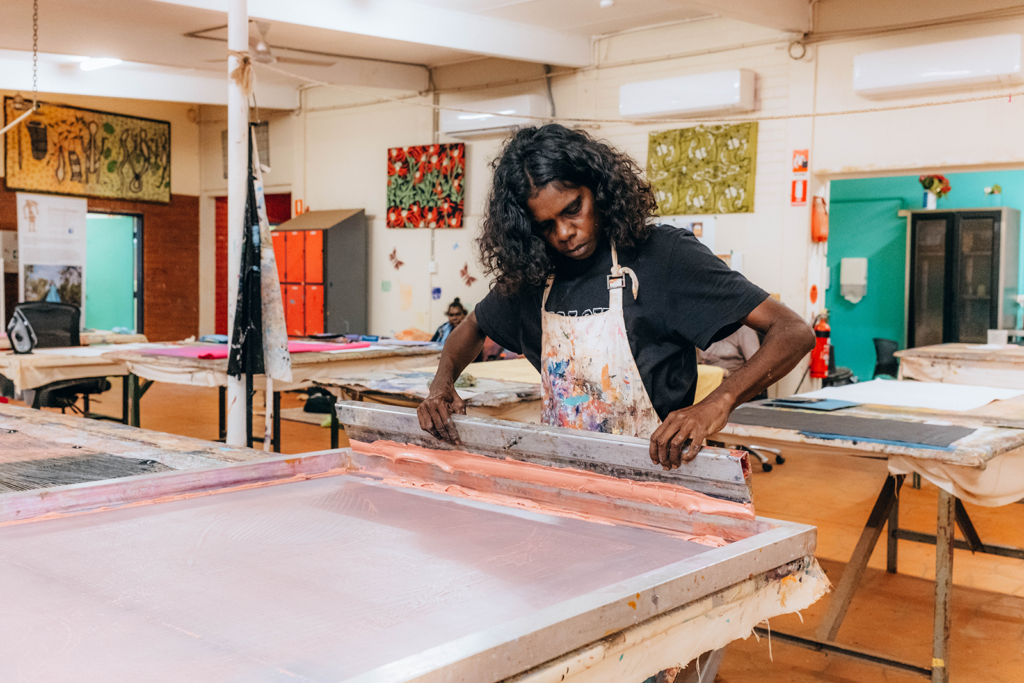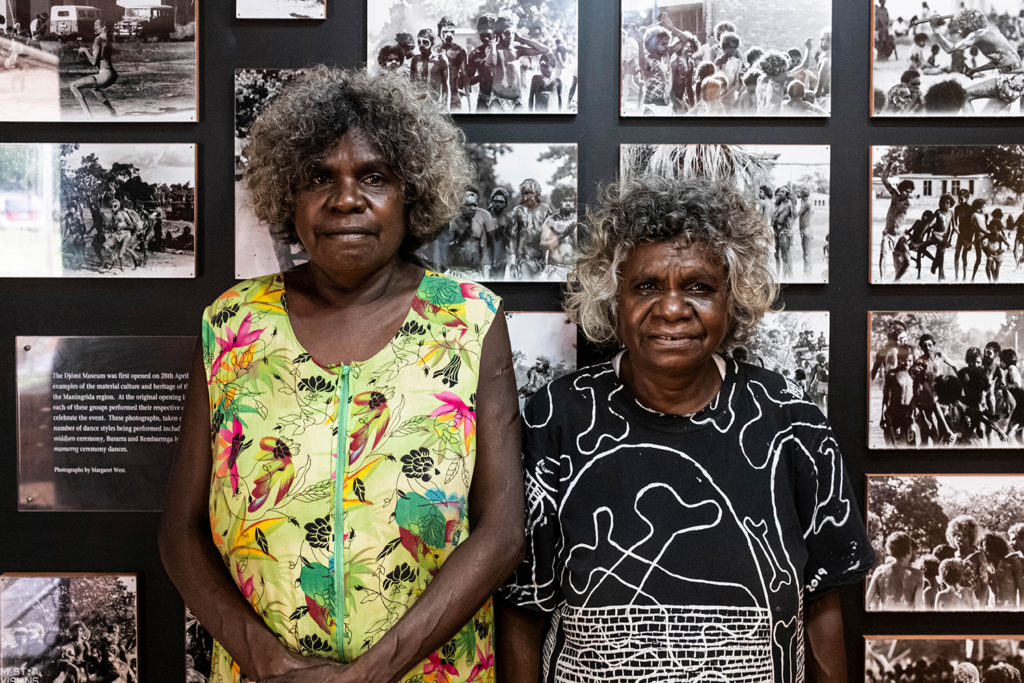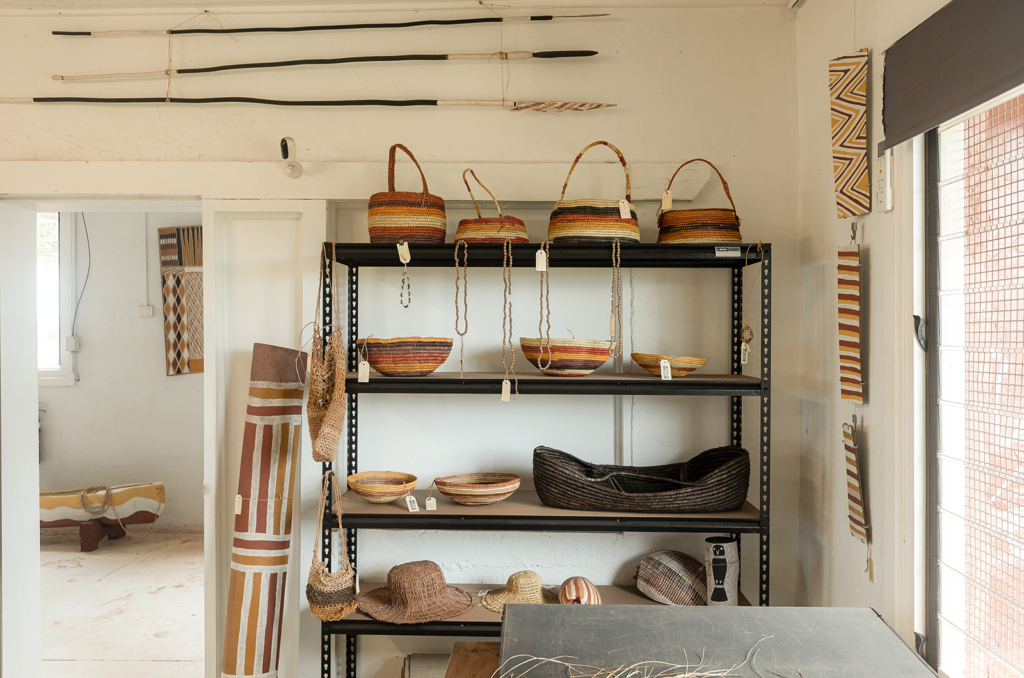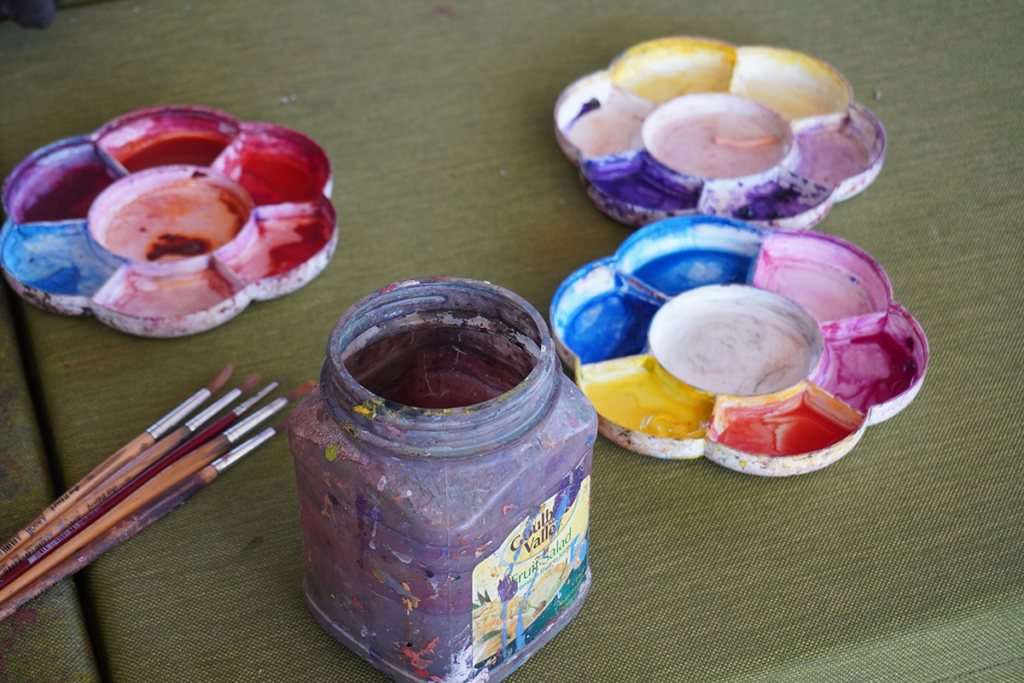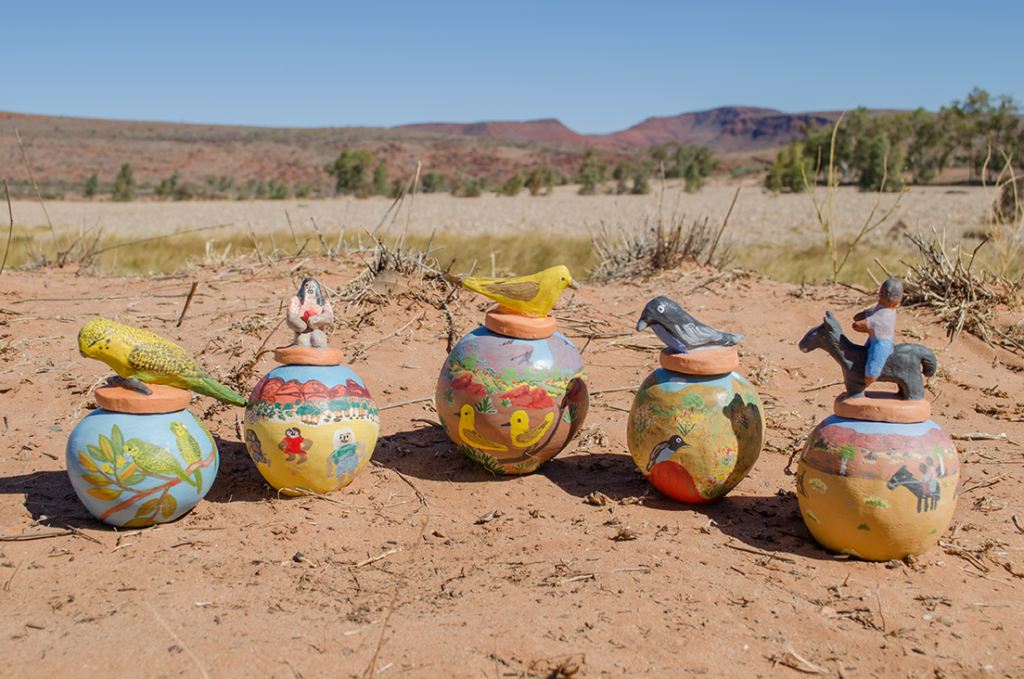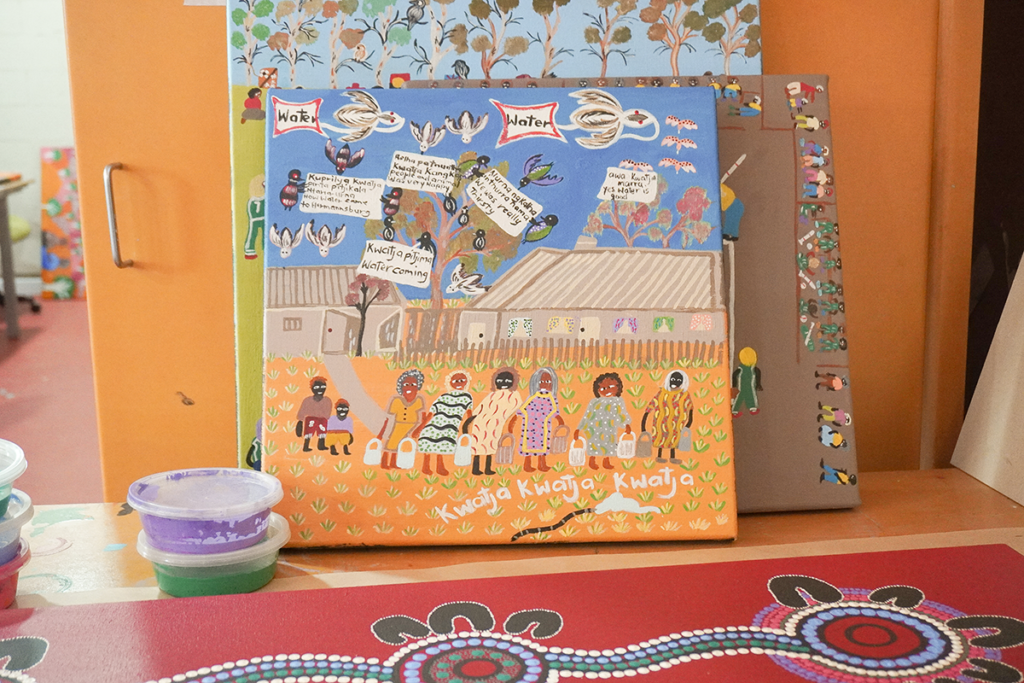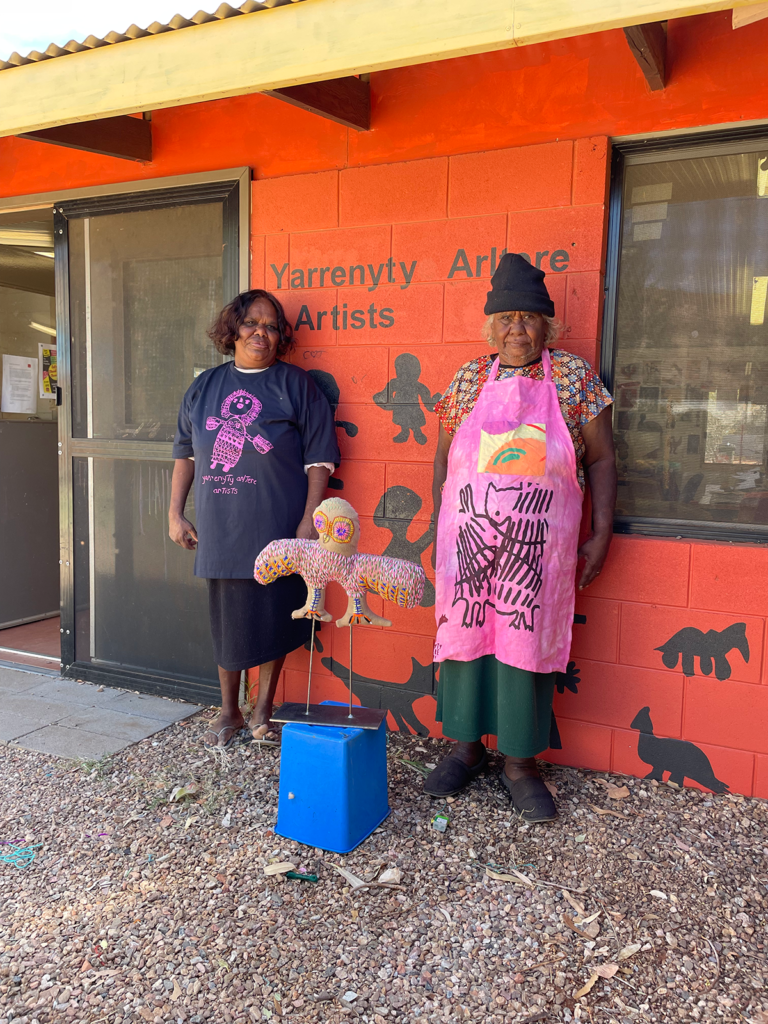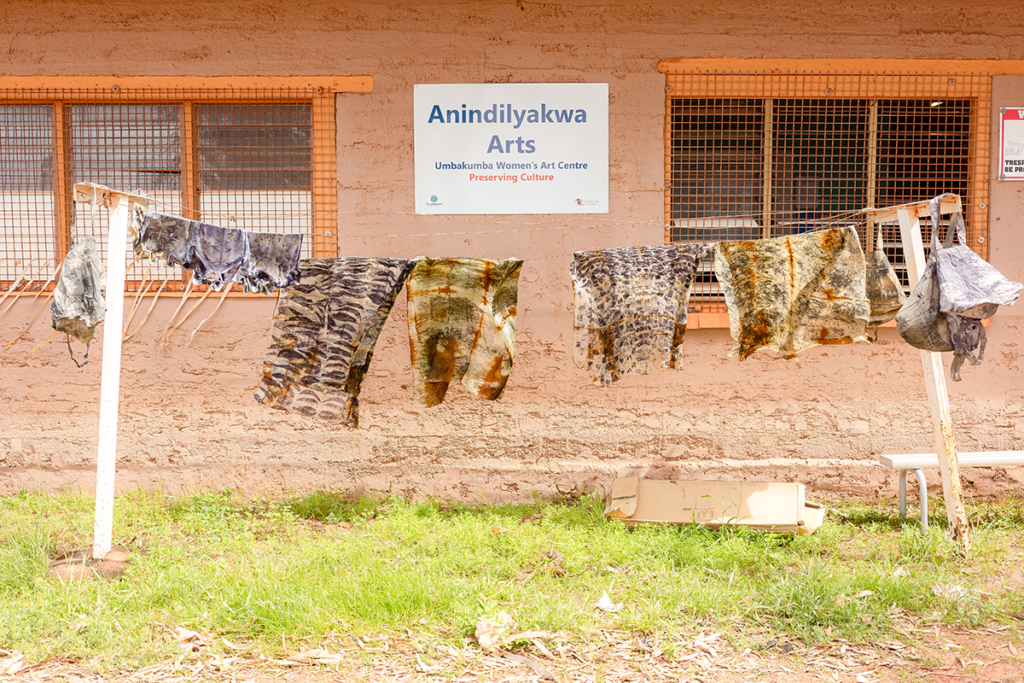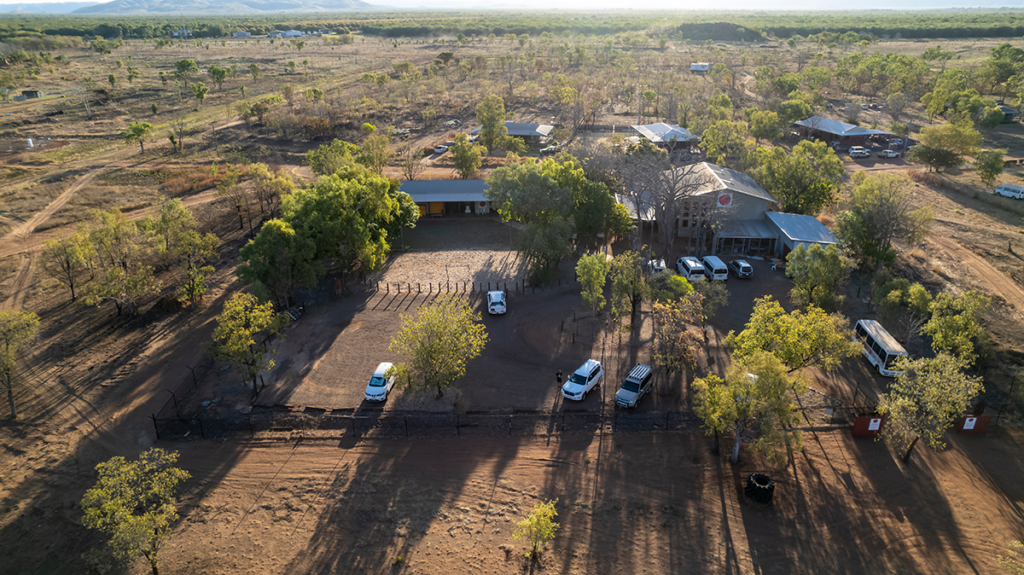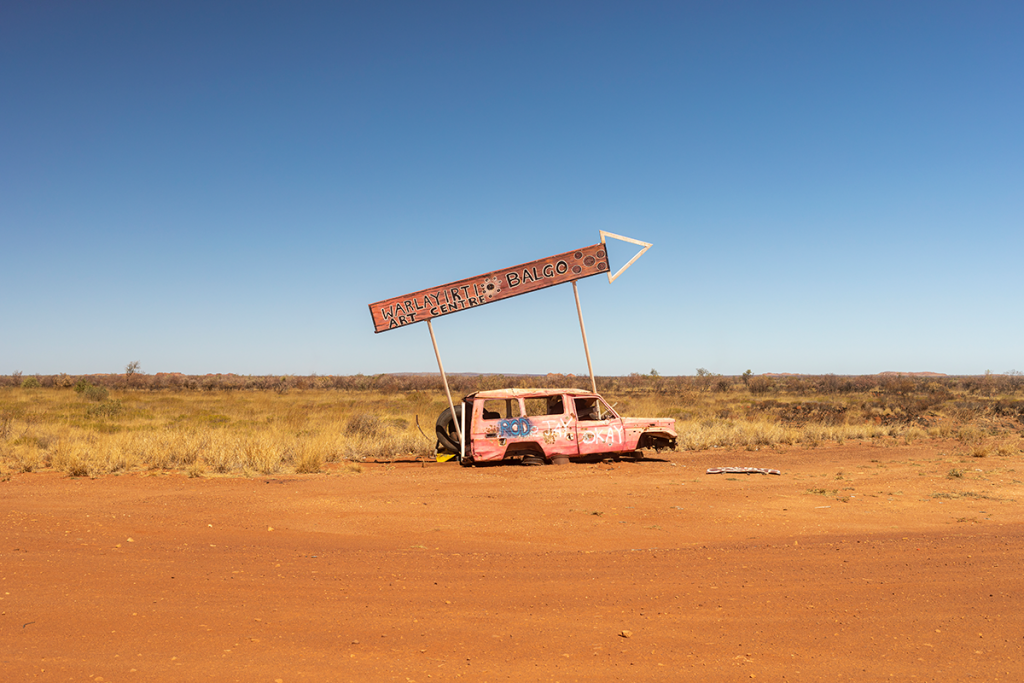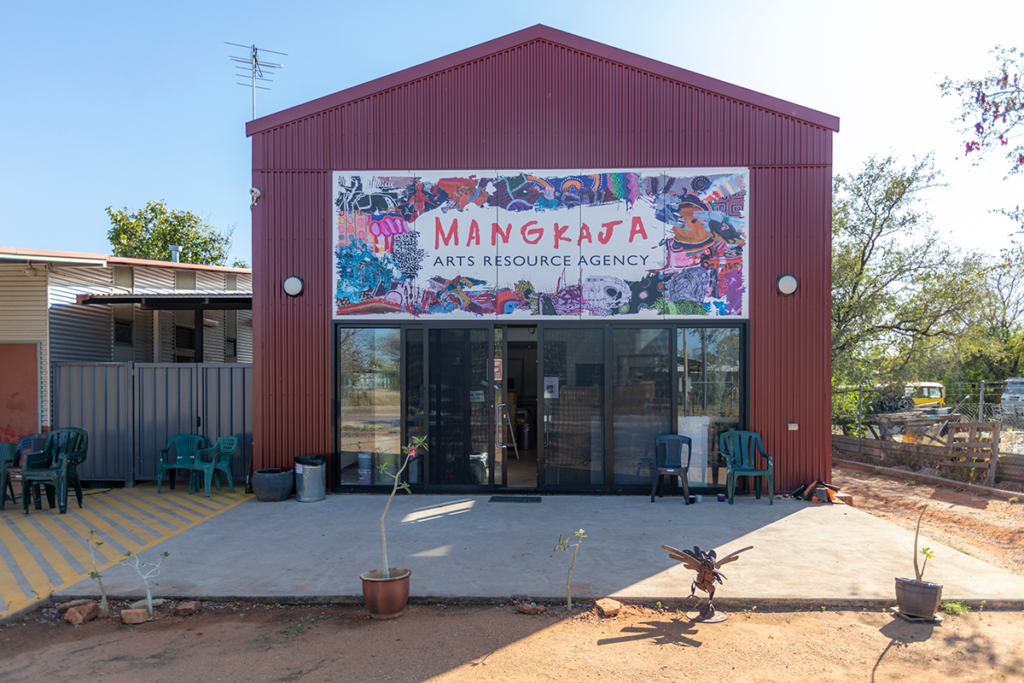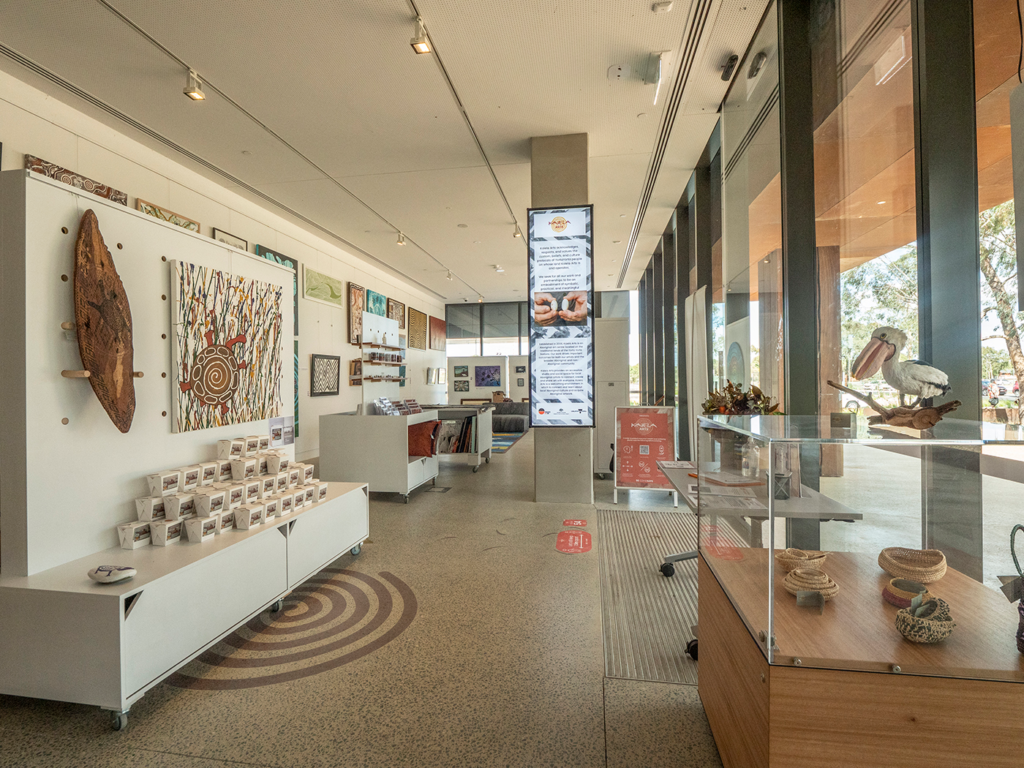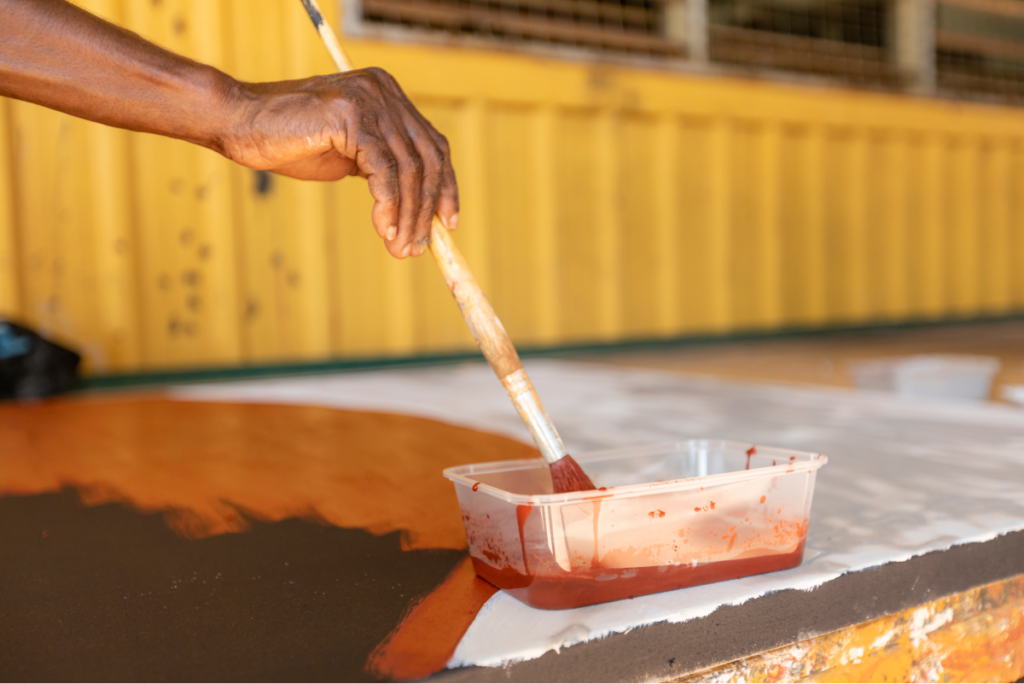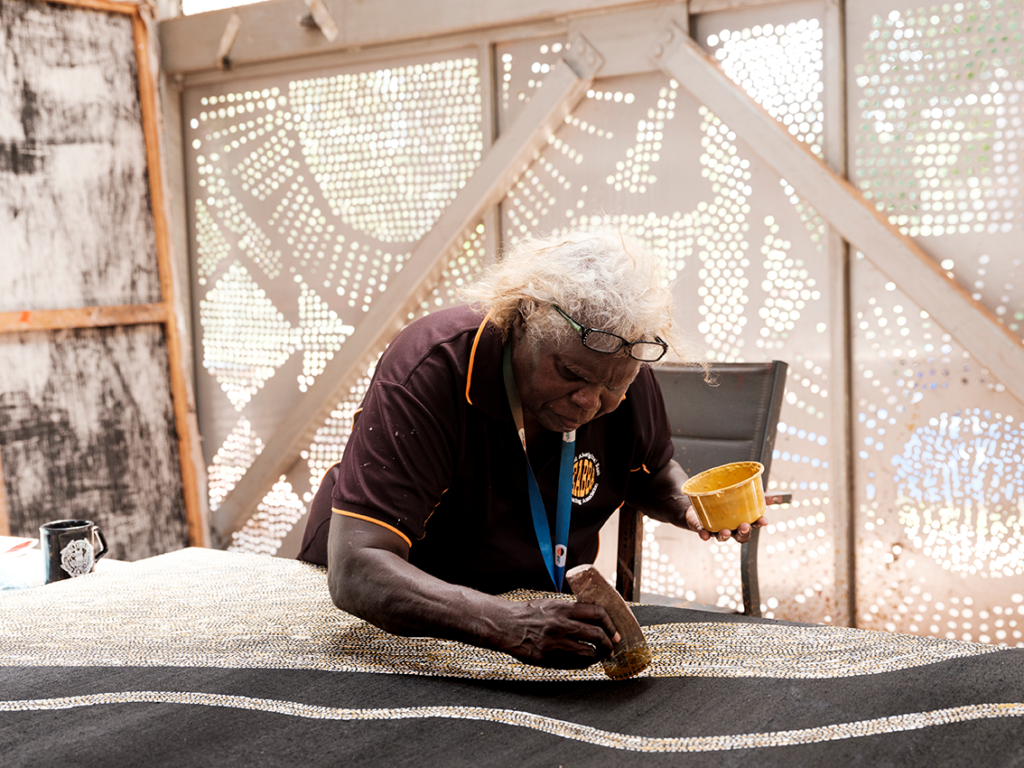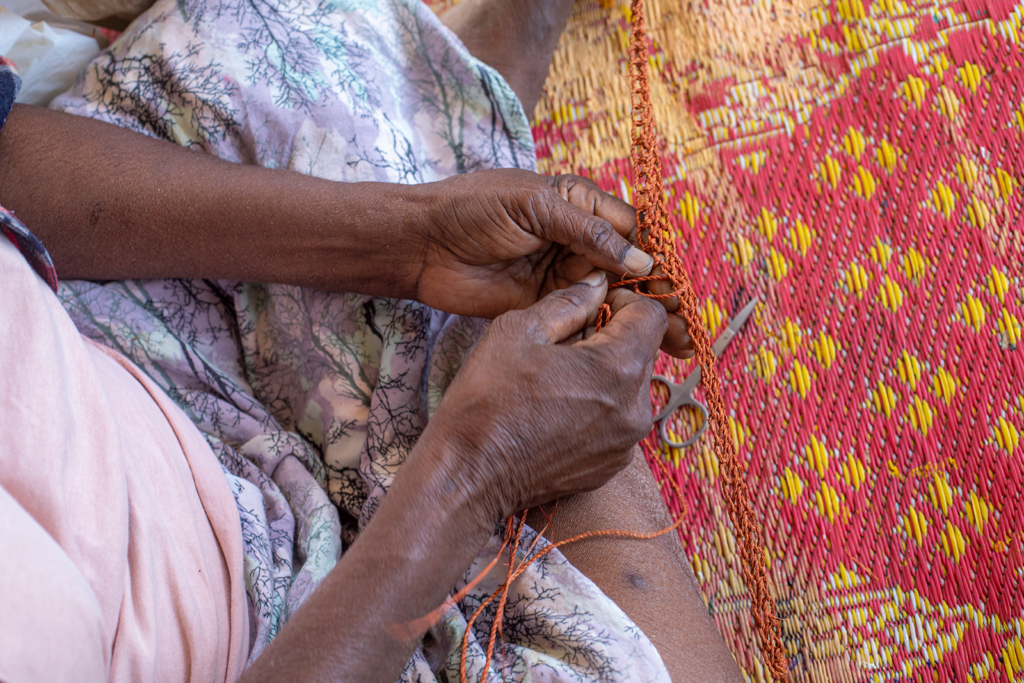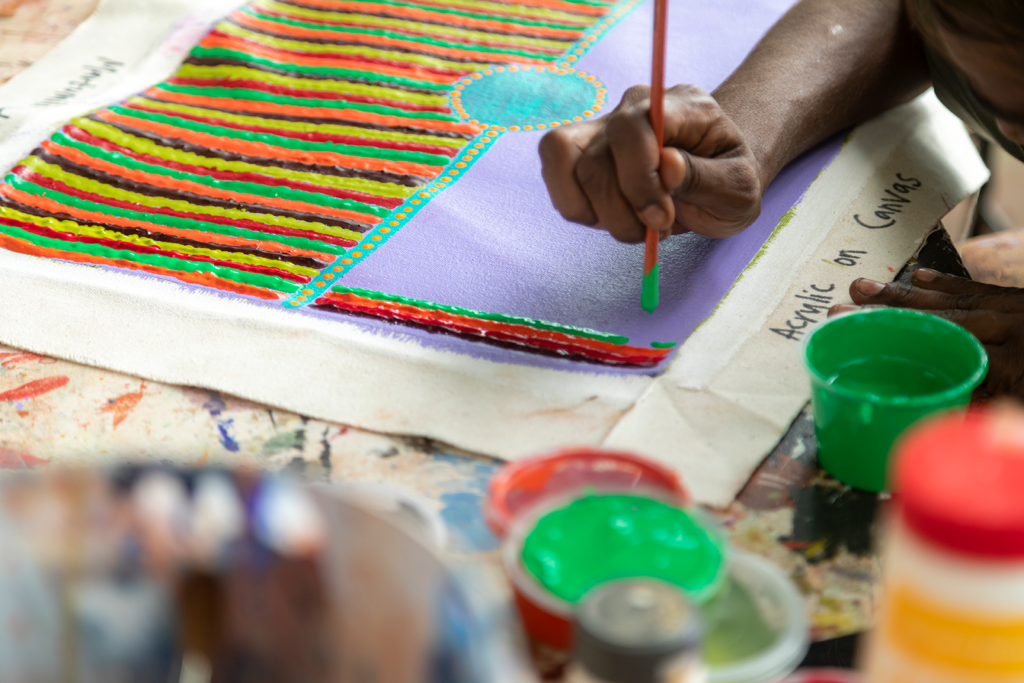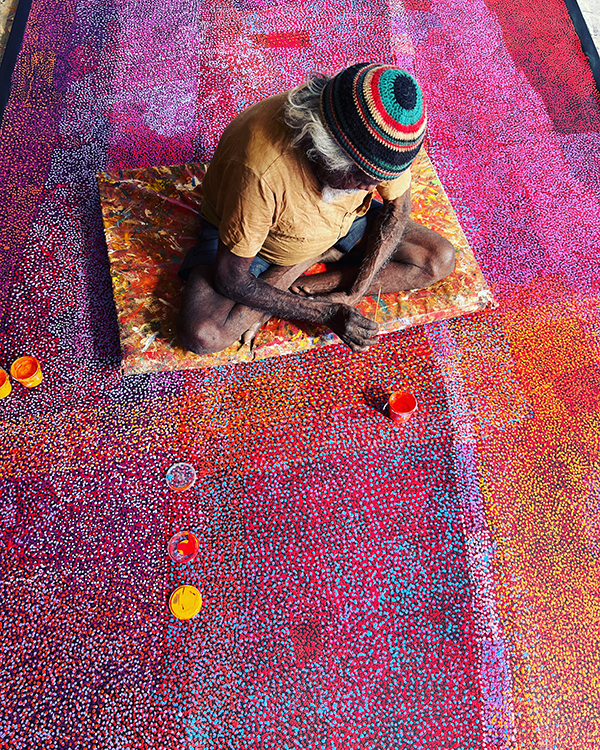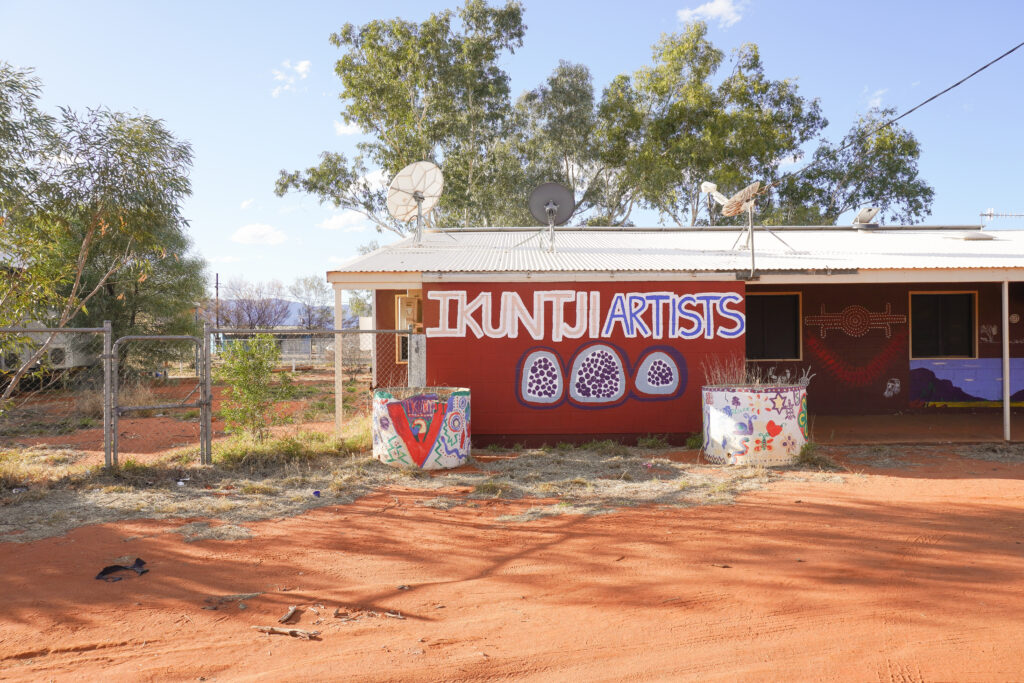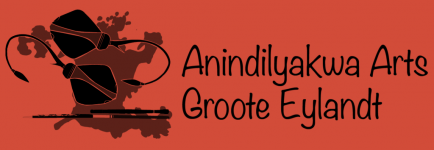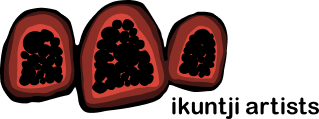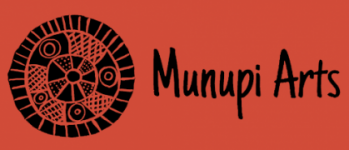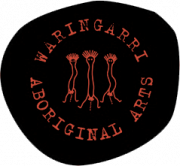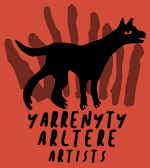Art, Culture, Country
Partnering with remote Indigenous Art Centres to deliver a landmark digital project that empowers Aboriginal and Torres Strait Islander artists to create and share unique arts and cultural experiences with the world.


Art, Culture, Country
Partnering with remote Indigenous Art Centres to deliver a landmark digital project that empowers Aboriginal and Torres Strait Islander artists to create and share unique arts and cultural experiences with the world.

Making Mun-dirra
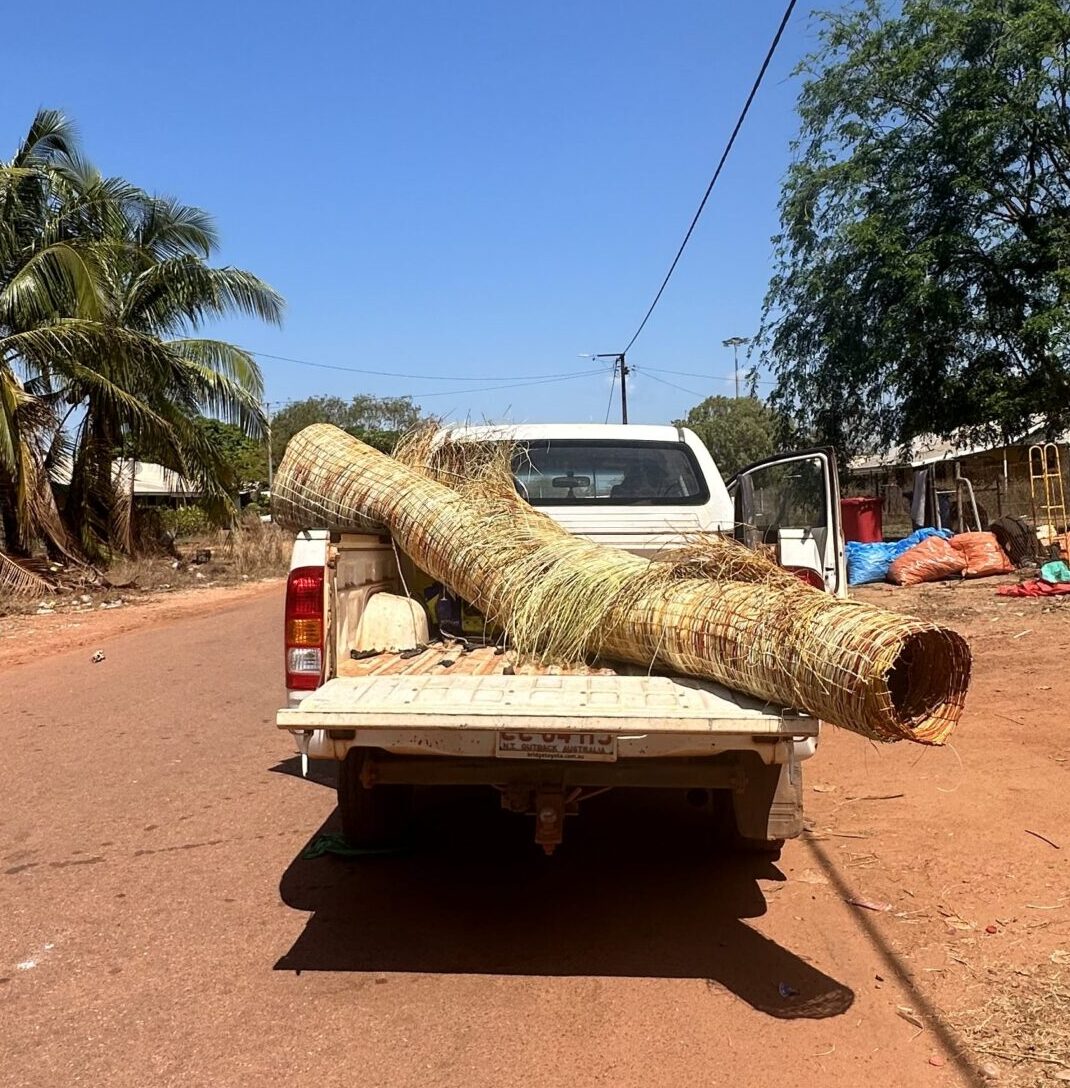
In early 2022, we received a call from the senior curator of Indigenous and Australian Art at the National Gallery of Victoria, Myles Russell-Cook, who had seen a weaving by Indra Prudence at the previous year’s Women’s Show at Vivien Anderson Gallery. “Can you do that but ten times bigger?” he asked.
At the time, we measured out ten by two-meter lengths of string on the floor of the art center with some of the artists. Looking at the size and scale the artists began self-managing the creation of Mun-dirra. “Yeah, we can do the first 3 meters this wet season, then two more by October, yo gun-mola (good),” they confidently declared.
And with that, the commission was accepted, and the women started collecting the various materials to begin weaving the Mun-dirra. At that moment, I don’t think we realized the enormity of the undertaking. Unlike other mediums such as canvas painting, weaving involves days of preparation just to collect materials such as Pandanus and natural dyes, and then preparing them meticulously for the weaving process. To begin the lengths Kurrajong was collected a young tree cut down and the inner fibrous bark is crushed with a rock and the fibres rolled on the thigh to create lengths of rope to create the outer edges of the Mun-dirra.
Next is a trip to collect the Pandanus leaves, just the soft middle new shoots which are then split various times to get smaller strands. How each artist splits the Pandanus can either be fine or thick and is often indicative of their weaving style. The strands are left to dry natural or ready to be boiled with natural dye.
Collecting the colour can be a whole day, the most common colour collected is Yellow or Dulga (Coelospermum reticulatum). The dye is found in the roots of the tree and is dug up and broken off. There are certain areas just outside of Maningrida that the plant grow in big clusters and the ground is pockmarked with new and old holes from decades and decades of harvesting. The outer root can be boiled with the stripped Pandanus to dye it yellow or various handfuls of white ash are added to the pot to turn it to hues of orange and reds. Some artists prefer using salty ocean water to boil the Pandanus and dye to create a more vibrant colour.
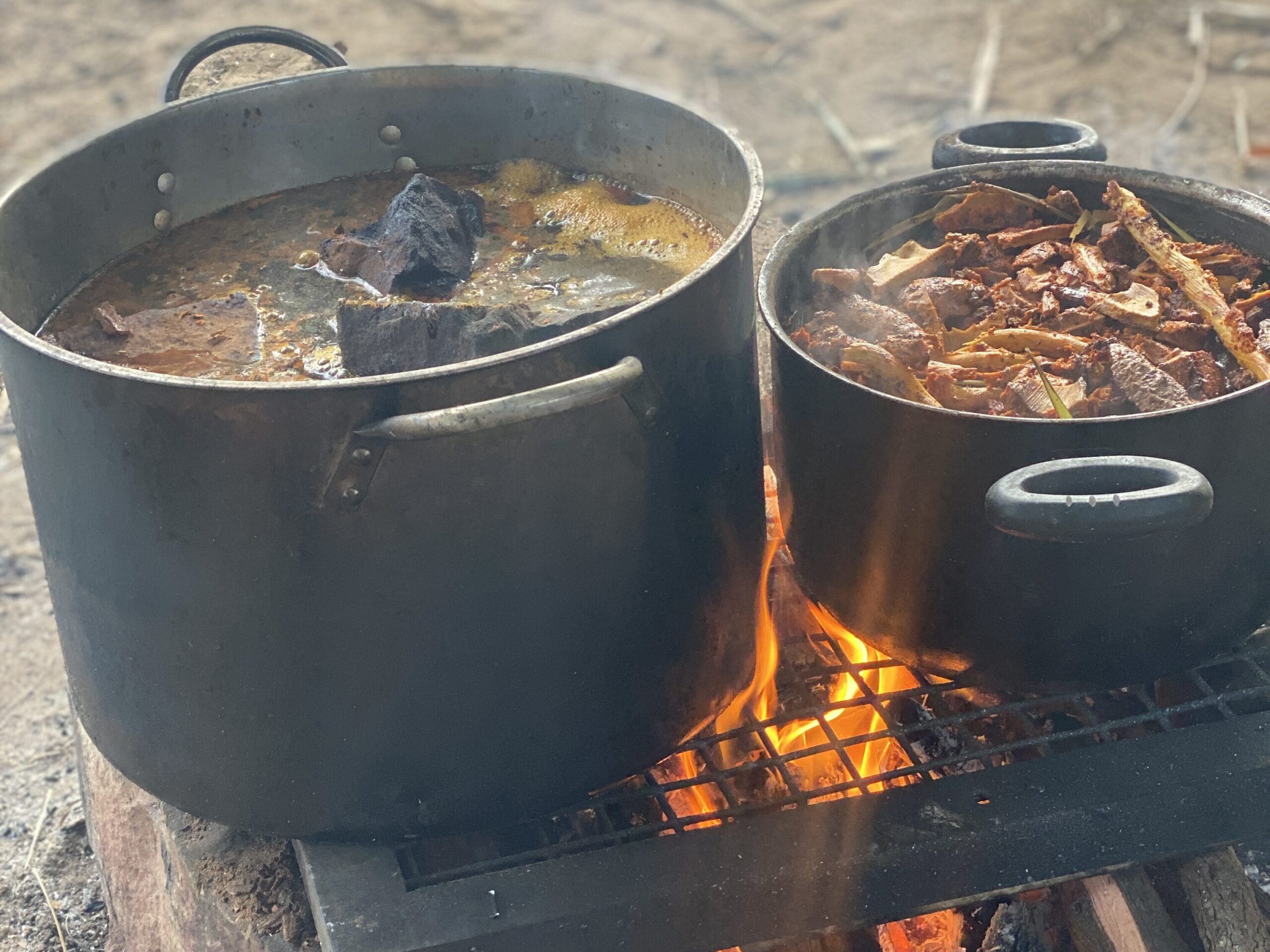
Each aspect of harvesting the materials requires an enormous amount of cultural knowledge and skill which has be passed down by mothers and grandmothers for over 60,000 years. As this commission went along that knowledge and skills was passed down once more to the daughters and granddaughters assisting on these trips.
Many of the fish net fences began with bold and vibrant colours, with the pink/purple dyed Pandanus featuring prominently at the beginning of many of the lengths. This was because the plant’s seeds are used to boil with the Pandanus to create this colour Windilk (Haemodorum coccineum) can only be harvested during the wet season in areas around the stone country to the south and west of Maningrida.
As the commission progressed and we moved into the dry season, the use of colour for some weavers became more sporadic and spontaneous, depending on what was available at the time. Trips to gather the natural colours were few and far between and the general pace of the weaving slowed down as for many of the artist sorry business’ and hunting with family for bushfoods took priority.
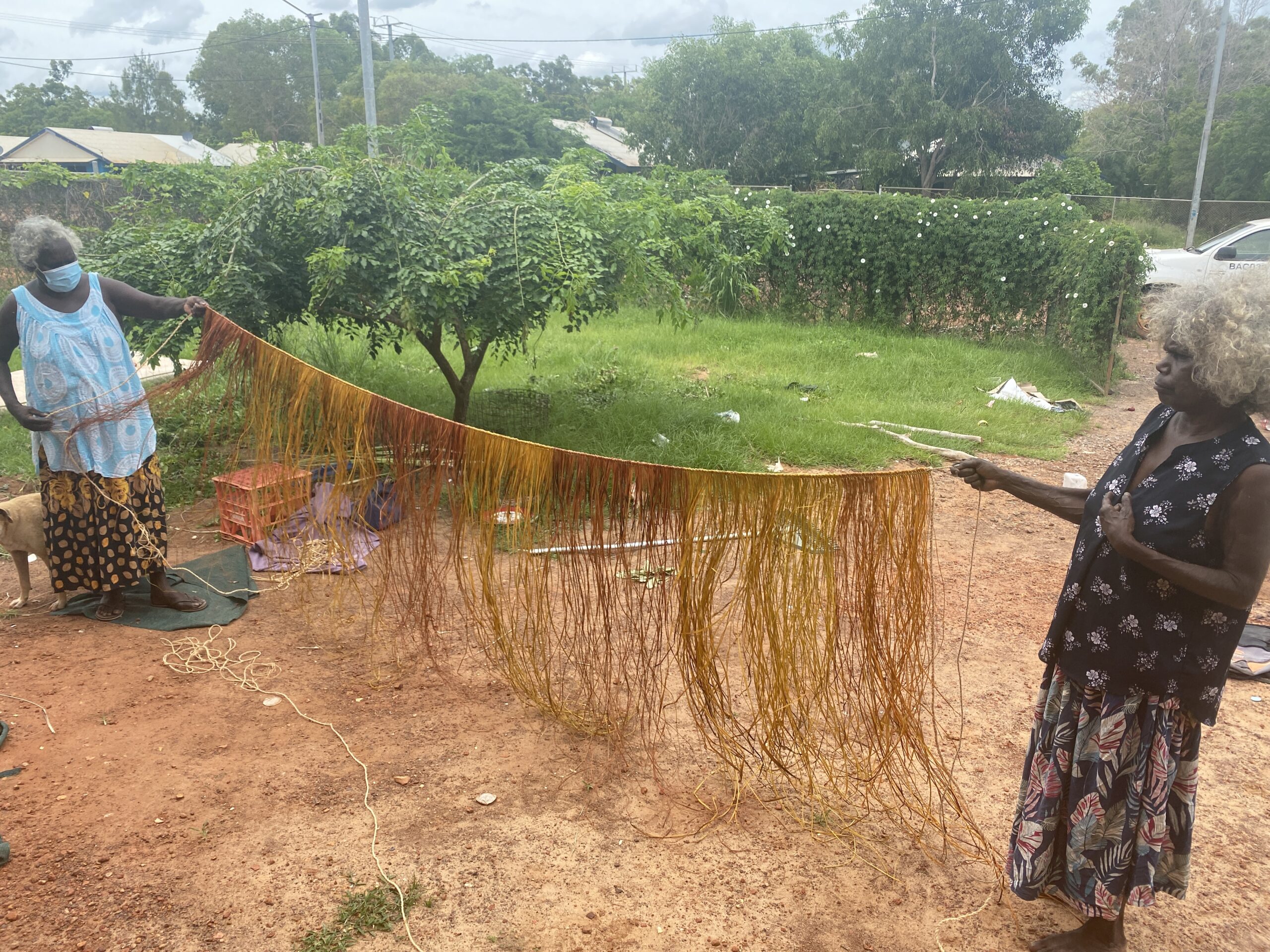
During the dry season, Pandanus also grows much slower; the leaves are tougher and harder to split apart. Heated negotiations ensued over the best places to collect Pandanus, as most locations close to the community had already been picked clean.
With each artist weaving the last finishing stitch, Jin-guga (also known as the centipede) on to her length there was a huge wave of relief and celebration. One more length done.
In very classic Arnhem Land art centre style, the last two lengths were finished the same day the barge was leaving out at an outstation a two and a half hour drive away. Arriving back at the art centre just in time to be quicky photographed and packed up ready for the journey down to Melbourne.
Mun-dirra is currently on display as part of the NGV Triennial until 7 April 2024.
UPLANDS is an immersive digital project that has been designed to celebrate Indigenous Art Centres and share Aboriginal and Torres Strait Islander artistic and cultural practices with the world.
This large scale immersive digital mapping project features over twenty remote Indigenous Art Centres, and interviews with over 150 Indigenous artists and arts workers from across the country.
UPLANDS is a project by Agency and has been funded by the Australian Government through the Restart to Invest, Sustain and Expand (RISE) program and the Indigenous Visual Art Industry Support (IVAIS) program.
Government Partners


Acknowledgement of Country
We acknowledge the Traditional Owners and Sovereign Custodians of the land on which we live and work. We extend our respects to their Ancestors and all First Nations peoples and Elders past, present, and future.
